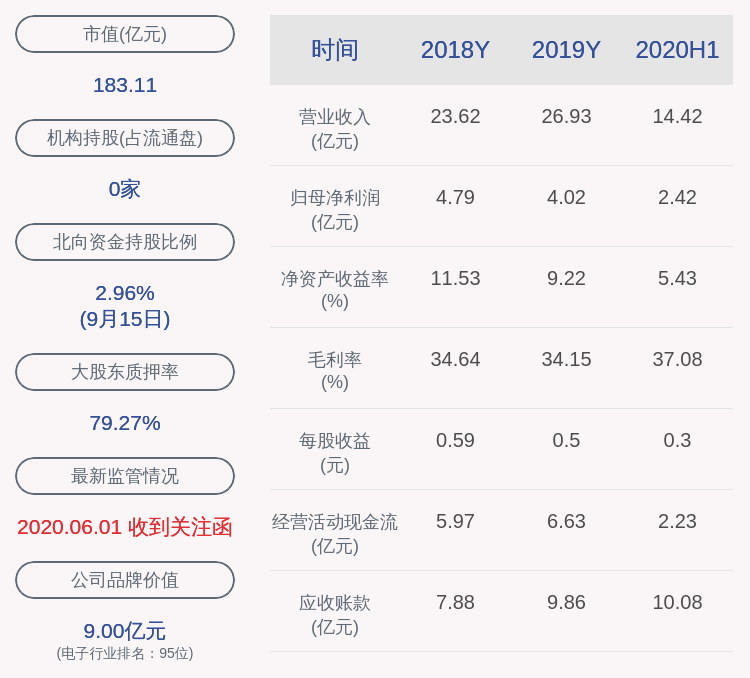иӢұиҜӯжҜ”иҫғзә§е’ҢжңҖй«ҳзә§зҡ„з”Ёжі•еҪ’зәі иӢұиҜӯжҜ”иҫғзә§е’ҢжңҖй«ҳзә§зҡ„з”Ёжі•еҪ’зәіиЎЁж ј( еӣӣ )
This is the very best.
This is much the best.
b. еәҸж•°иҜҚйҖҡеёёеҸӘдҝ®йҘ°жңҖй«ҳзә§ гҖӮ
Africa is the second largest continent.
8.иҰҒйҒҝе…ҚйҮҚеӨҚдҪҝз”ЁжҜ”иҫғзә§ гҖӮ
(й”ҷ) He is more cleverer than his brother.
(еҜ№) He is more clever than his brother.
(еҜ№) He is cleverer than his brother.
9.иҰҒйҒҝе…Қе°Ҷдё»иҜӯеҗ«еңЁжҜ”иҫғеҜ№иұЎдёӯ гҖӮ
(й”ҷ) China is larger that any country in Asia.
(еҜ№) China is larger than any other country in Asia.
10.иҰҒжіЁж„ҸеҜ№еә”еҸҘеһӢпјҢйҒөеҫӘеүҚеҗҺдёҖиҮҙзҡ„еҺҹеҲҷ гҖӮ
The population of Shanghai is larger than that of Beijing.
It is easier to make a plan than to carry it out.
11.иҰҒжіЁж„ҸеҶ иҜҚзҡ„дҪҝз”ЁпјҢеҗҺжңүеҗҚиҜҚзҡ„ж—¶еҖҷпјҢеүҚйқўжүҚжңүеҸҜиғҪжңүеҗҚиҜҚ гҖӮ
жҜ”иҫғпјҡWhich is larger, Canada or Australia?
Which is the larger country, Canada or Australia?
She is taller than her two sisters.
She is the taller of the two sisters.
;
Q6пјҡиӢұиҜӯжҜ”иҫғзә§е’ҢжңҖй«ҳзә§зҡ„з”Ёжі•еҪ’зәі
еңЁеӯҰд№ иӢұиҜӯиҝҮзЁӢдёӯпјҢдјҡйҒҮеҲ°еҫҲеӨҡзҡ„иҜӯжі•й—®йўҳпјҢжҜ”еҰӮжҜ”иҫғзә§е’ҢжңҖй«ҳзә§зҡ„з”Ёжі•пјҢеҜ№дәҺиҝҷдәӣиҜӯжі•дҪ иғҪеӨҹжҺҢжҸЎеҗ—пјҹдёӢйқўжҳҜжҲ‘ж•ҙзҗҶзҡ„иӢұиҜӯжҜ”иҫғзә§е’ҢжңҖй«ҳзә§зҡ„з”Ёжі•пјҢж¬ўиҝҺйҳ…иҜ»пјҒ
иӢұиҜӯжҜ”иҫғзә§е’ҢжңҖй«ҳзә§зҡ„з”Ёжі• дёҖгҖҒеҪўе®№иҜҚгҖҒеүҜиҜҚзҡ„жҜ”иҫғзә§е’ҢжңҖй«ҳзә§зҡ„жһ„жҲҗ规еҲҷ
1.дёҖиҲ¬еҚ•йҹіиҠӮиҜҚе’Ңе°‘ж•°д»Ҙ-erпјҢ-owз»“е°ҫзҡ„еҸҢйҹіиҠӮиҜҚпјҢжҜ”иҫғзә§еңЁеҗҺйқўеҠ -erпјҢжңҖй«ҳзә§еңЁеҗҺйқўеҠ -est;
(1)еҚ•йҹіиҠӮиҜҚ
еҰӮпјҡsmallвҶ’smallerвҶ’smallest shortвҶ’shorterвҶ’shortest
tallвҶ’tallerвҶ’tallest greatвҶ’greaterвҶ’greatest
(2)еҸҢйҹіиҠӮиҜҚ
еҰӮпјҡcleverвҶ’clevererвҶ’cleverest narrowвҶ’narrowerвҶ’narrowest
2.д»ҘдёҚеҸ‘йҹіeз»“е°ҫзҡ„еҚ•йҹіиҠӮиҜҚпјҢжҜ”иҫғеңЁеҺҹзә§еҗҺеҠ -rпјҢжңҖй«ҳзә§еңЁеҺҹзә§еҗҺеҠ -st;
еҰӮпјҡlargeвҶ’largerвҶ’largest niceвҶ’nicerвҶ’nicest ableвҶ’ablerвҶ’ablest
3.еңЁйҮҚиҜ»й—ӯйҹіиҠӮ(еҚіпјҡиҫ…йҹі+е…ғйҹі+иҫ…йҹі)дёӯпјҢе…ҲеҸҢеҶҷжң«е°ҫзҡ„иҫ…йҹіеӯ—жҜҚпјҢжҜ”иҫғзә§еҠ -erпјҢжңҖй«ҳзә§еҠ -est;
еҰӮпјҡbigвҶ’biggerвҶ’biggest hotвҶ’hotterвҶ’hottest fatвҶ’fatterвҶ’fattest
4.д»ҘвҖңиҫ…йҹіеӯ—жҜҚ+yвҖқз»“е°ҫзҡ„еҸҢйҹіиҠӮиҜҚпјҢжҠҠyж”№дёәiпјҢжҜ”иҫғзә§еҠ -erпјҢжңҖй«ҳзә§еҠ -est;
еҰӮпјҡeasyвҶ’easierвҶ’easiest heavyвҶ’heavierвҶ’heaviest
busyвҶ’busierвҶ’busiest happyвҶ’happierвҶ’happiest
5.е…¶д»–еҸҢйҹіиҠӮиҜҚе’ҢеӨҡйҹіиҠӮиҜҚпјҢжҜ”иҫғзә§еңЁеүҚйқўеҠ moreпјҢжңҖй«ҳзә§еңЁеүҚйқўеҠ most;
еҰӮпјҡbeautifulвҶ’more beautifulвҶ’most beautiful
differentвҶ’more differentвҶ’most different
easilyвҶ’more easilyвҶ’most easily
жіЁж„Ҹпјҡ(1)еҪўе®№иҜҚжңҖй«ҳзә§еүҚйҖҡеёёеҝ…йЎ»з”Ёе®ҡеҶ иҜҚ theпјҢеүҜиҜҚжңҖй«ҳзә§еүҚеҸҜдёҚз”Ё гҖӮ
дҫӢеҸҘпјҡ The Sahara is the biggest desert in the world.
(2) еҪўе®№иҜҚmostеүҚйқўжІЎжңүtheпјҢдёҚиЎЁзӨәжңҖй«ҳзә§зҡ„еҗ«д№үпјҢеҸӘиЎЁзӨә"йқһеёё" гҖӮ
It is a most important problem.
=It is a very important problem.
6.жңүе°‘ж•°еҪўе®№иҜҚгҖҒеүҜиҜҚзҡ„жҜ”иҫғзә§е’ҢжңҖй«ҳзә§жҳҜдёҚ规еҲҷзҡ„пјҢеҝ…йЎ»зҶҹи®° гҖӮ
еҰӮпјҡgoodвҶ’betterвҶ’best wellвҶ’betterвҶ’best
badвҶ’worseвҶ’worst illвҶ’worseвҶ’worst
oldвҶ’older/elderвҶ’oldest/eldest
many/muchвҶ’moreвҶ’most littleвҶ’lessвҶ’least
far вҶ’further/fartherвҶ’ furthest/farthest
дәҢгҖҒеҪўе®№иҜҚгҖҒеүҜиҜҚзҡ„жҜ”иҫғзә§е’ҢжңҖй«ҳзә§зҡ„з”Ёжі•
1.вҖңA + be +еҪўе®№иҜҚжҜ”иҫғзә§ + than + BвҖқ ж„ҸжҖқдёәвҖңAжҜ”BжӣҙвҖҰвҖҰвҖқ гҖӮ
еҰӮпјҡThis tree is taller than that one. иҝҷжЈөж ‘жҜ”йӮЈжЈөж ‘й«ҳ гҖӮ
жіЁж„Ҹпјҡ
в‘ еңЁеҗ«жңүиҝһиҜҚthanзҡ„жҜ”иҫғзә§дёӯпјҢеүҚеҗҺзҡ„жҜ”иҫғеҜ№иұЎеҝ…йЎ»жҳҜеҗҢдёҖиҢғз•ҙпјҢеҚіеҗҢзұ»дәӢзү©д№Ӣй—ҙзҡ„жҜ”иҫғ гҖӮ
в‘ЎеңЁжҜ”иҫғзә§еүҚйқўдҪҝз”ЁmuchпјҢиЎЁзӨәзЁӢеәҰзЁӢеәҰвҖңејәеҫ—еӨҡвҖқ гҖӮ
еҰӮпјҡA watermelon is much bigger than an apple.
в‘ў very, quiteдёҖиҲ¬еҸӘиғҪдҝ®йҘ°еҺҹзә§пјҢдёҚиғҪдҝ®йҘ°жҜ”иҫғзә§ гҖӮ
2.вҖңжҜ”иҫғзә§ + and + жҜ”иҫғзә§вҖқжҲ–вҖңmore and more +еҺҹзә§вҖқиЎЁзӨәвҖңи¶ҠжқҘи¶ҠвҖҰвҖҰвҖқ
еҰӮпјҡIt becomes warmer and warmer when spring comes.
жҳҘеӨ©жқҘдәҶпјҢеӨ©ж°”еҸҳеҫ—и¶ҠжқҘи¶Ҡжҡ–е’ҢдәҶ гҖӮ
It is getting cooler and cooler.
еӨ©ж°”и¶ҠжқҘи¶ҠеҮүзҲҪ гҖӮ
The wind became more and more heavily.
йЈҺеҸҳеҫ—и¶ҠжқҘи¶ҠеӨ§ гҖӮ
Our school is becoming more and more beautiful.
жҲ‘们зҡ„еӯҰж ЎеҸҳеҫ—и¶ҠжқҘи¶ҠзҫҺдёҪ гҖӮ
3.еңЁеҗ«жңүorзҡ„йҖүжӢ©з–‘й—®еҸҘдёӯпјҢеҰӮжһңжңүдёӨиҖ…дҫӣйҖүжӢ©пјҢеүҚйқўзҡ„еҪўе®№иҜҚиҰҒз”ЁжҜ”иҫғзә§еҪўејҸ гҖӮ
еҰӮпјҡWho is taller,Tim or Tom? и°Ғжӣҙй«ҳпјҢTimиҝҳжҳҜTom?
4. вҖңthe +жҜ”иҫғзә§вҖҰвҖҰ, the+жҜ”иҫғзә§вҖқпјҢиЎЁзӨәвҖңи¶ҠвҖҰвҖҰи¶ҠвҖҰвҖҰвҖқ гҖӮ
The more money you make, the more you spend.
й’ұдҪ иөҡеҫ—и¶ҠеӨҡпјҢиҠұеҫ—и¶ҠеӨҡ гҖӮ
The soonerпјҢthe better.
и¶Ҡеҝ«и¶ҠеҘҪ гҖӮ
5. иЎЁзӨәеҖҚж•°зҡ„жҜ”иҫғзә§з”Ёжі•пјҡ
в‘ . A is вҖҰtimes the size /height/length/width of B.
еҰӮпјҡThe new building is three times the height of the old one.
иҝҷеә§ж–°жҘјжҜ”йӮЈеә§ж—§жҘјй«ҳдёүеҖҚ гҖӮ(ж–°жҘјжҳҜж—§жҘјзҡ„еӣӣеҖҚй«ҳ)
в‘Ў. A is вҖҰtimes as big /high/long/wide/large as B.
еҰӮпјҡAsia is four times as large as Europe.
жҺЁиҚҗйҳ…иҜ»
- advжёёжҲҸжҳҜд»Җд№Ҳж„ҸжҖқпјҹиӢұиҜӯдёӯadj;advжҳҜд»Җд№Ҳж„ҸжҖқпјҹ
- йӯҸеӨ§еӢӢе’Ң马иӢҸз»“е©ҡдәҶеҗ— йӯҸеӨ§еӢӢ马иӢҸ
- 100зәізұізӯүдәҺеӨҡе°‘еҫ®зұіпјҹзәізұіе’Ңеҫ®зұі е“ӘдёӘжӣҙеӨ§пјҹ
- 90еҗҺ|жӣқеӨ§зғӯз”·еҘідё»жҗһеү§з»„еӨ«еҰ»пјҒеҘіж–№з»ҸйӘҢдё°еҜҢпјҢз”·ж–№е’Ң90еҗҺеҘіжҳҹжҒӢзҲұзқЎзІү
- жң¬иғҪзҡ„иҝ‘д№үиҜҚе’ҢеҸҚд№үиҜҚ жң¬иғҪзҡ„иҝ‘д№үиҜҚ
- з”·жҖ§еҠӣйҮҸе·…еі°е№ҙйҫ„ 20еІҒе’Ң30еІҒеҠӣж°”и°ҒеӨ§
- exfatе’Ңntfsжңүд»Җд№ҲеҢәеҲ« еҲҶй…ҚеҚ•е…ғеӨ§е°Ҹ;Uзӣҳз”ЁNTFSдёҺexFATзҡ„еҢәеҲ«?
- й…·еҘҮж Үеҝ—logoеӣҫзүҮе’ҢеҸӨй©°,еҸӨй©°е’Ңй…·еҘҮзҡ„ж Үеҝ—жңүе“ӘдәӣеҢәеҲ«пјҹ
- еҜ№жҜ”зҺҮжҳҜд»Җд№Ҳж„ҸжҖқ;vsе’Ңpkд»Җд№Ҳж„ҸжҖқ
- зұійҶӢе’ҢзҷҪйҶӢзҡ„еҢәеҲ« зұійҶӢеҸҜд»Ҙд»ЈжӣҝзҷҪйҶӢеҗ—? зұійҶӢе’ҢзҷҪйҶӢзҡ„еҢәеҲ«















